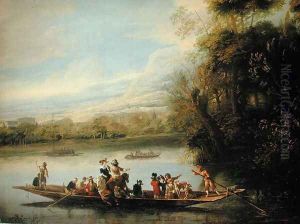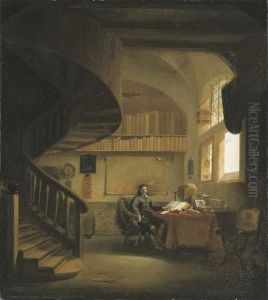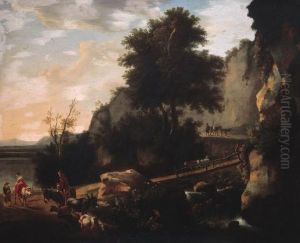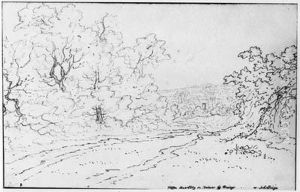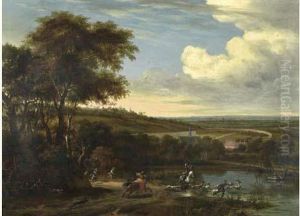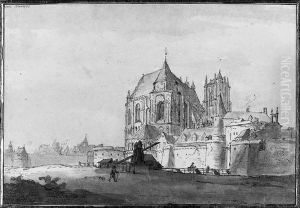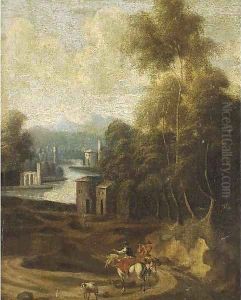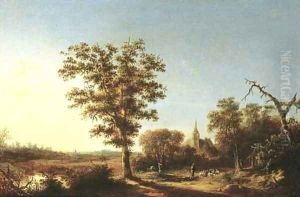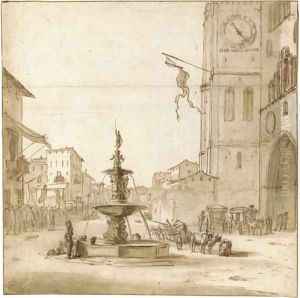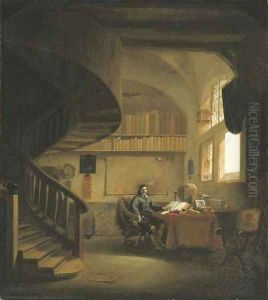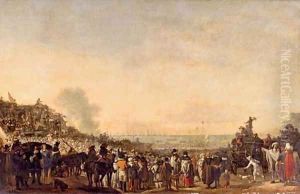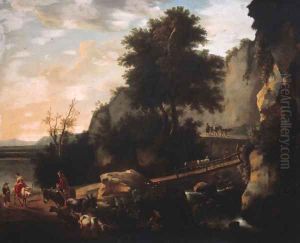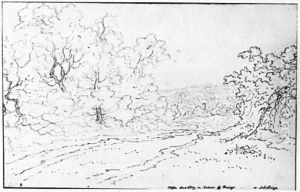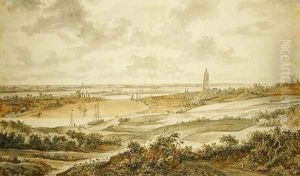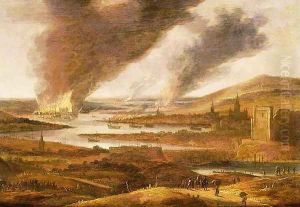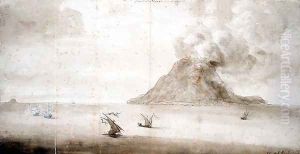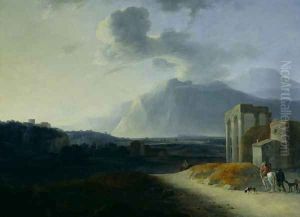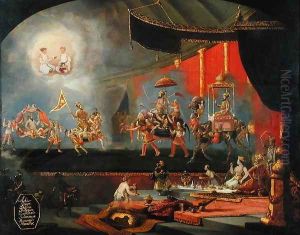Willem Schellinks Paintings
Willem Schellinks was a Dutch Golden Age painter, draughtsman, and etcher. Born in Amsterdam in 1627, Schellinks was known for his landscapes, depictions of ruins, and topographical views, which were highly prized by collectors of his time. He was also recognized for his ability to capture the essence of the places he visited through his art.
Schellinks travelled extensively throughout Europe, which greatly influenced his work. His journeys took him to France, Italy, Switzerland, Germany, and England, among other places. These trips provided him with a wealth of inspiration and subject matter, and he often recorded his travels in detailed drawings and paintings. His travel experiences are documented in a diary, which provides valuable insights into the culture and landscapes of 17th-century Europe.
As an artist, Schellinks was part of the second generation of Dutch Italianate landscape painters. These artists incorporated the warm light and classical themes of the Italian landscape into their Dutch works. However, Schellinks also had a unique ability to blend the picturesque with accurate topographical depiction, making his works both appealing and informative.
Despite his talent and the quality of his work, Schellinks did not achieve the same level of fame as some of his contemporaries, such as Jacob van Ruisdael or Meindert Hobbema. Nevertheless, his paintings and drawings are considered valuable contributions to the Dutch landscape genre. Schellinks' works can be found in various art collections, museums, and galleries around the world.
Willem Schellinks passed away in 1678, leaving behind a legacy as a skilled landscape artist who captured the diverse scenery of Europe during the Dutch Golden Age. His art continues to be appreciated by art historians and enthusiasts for its blend of picturesque beauty and geographical accuracy.
